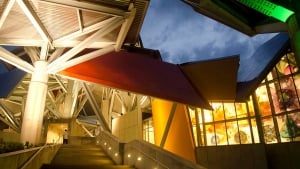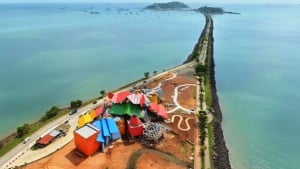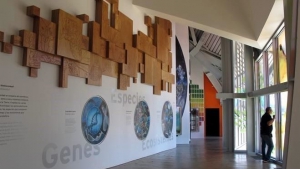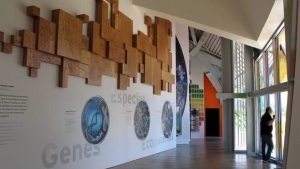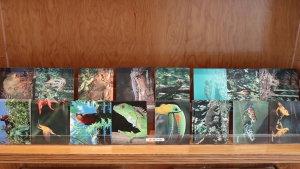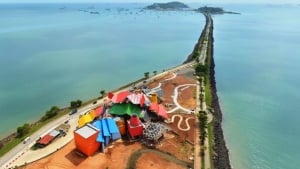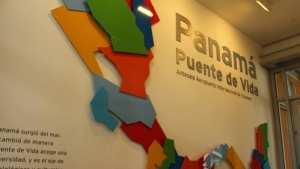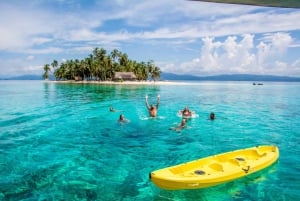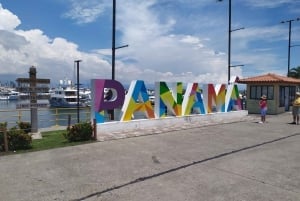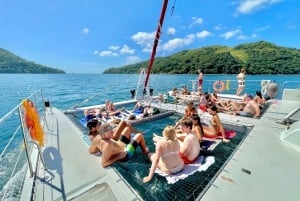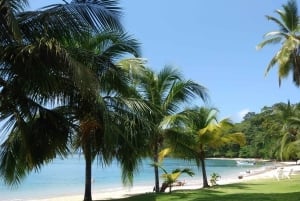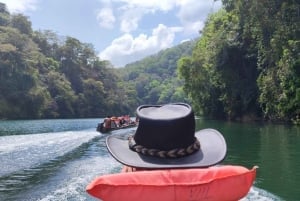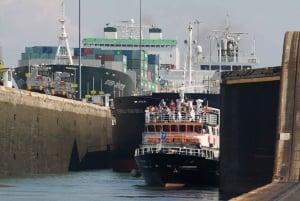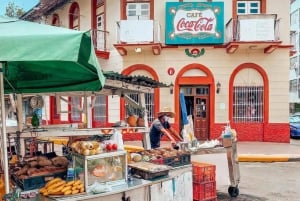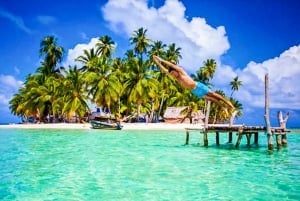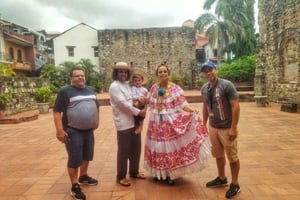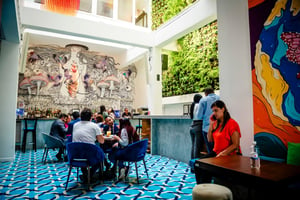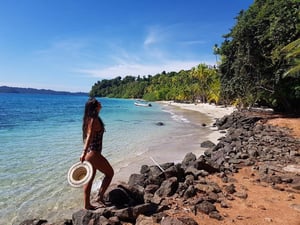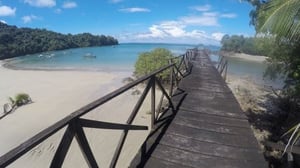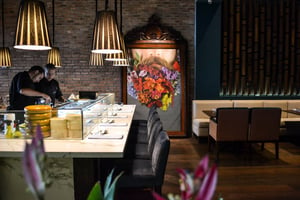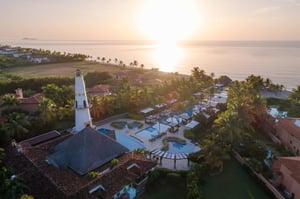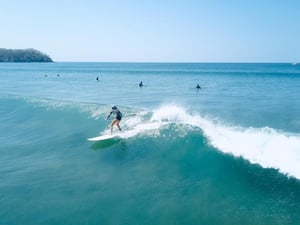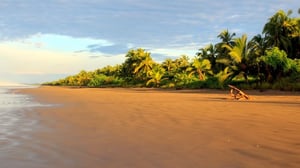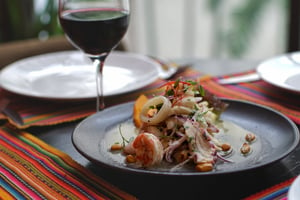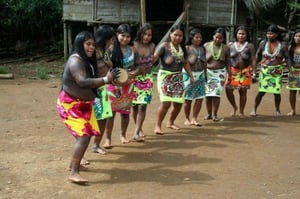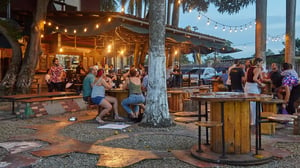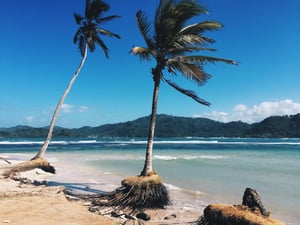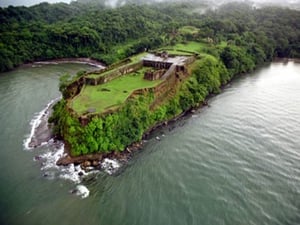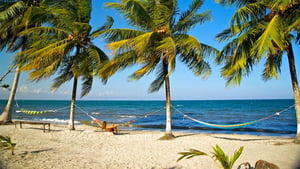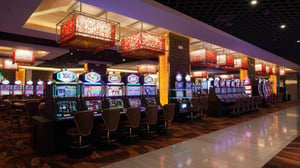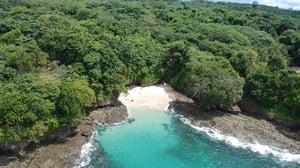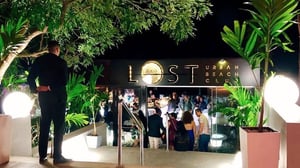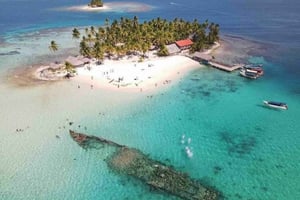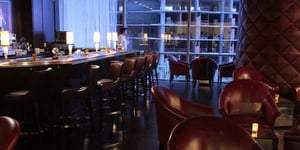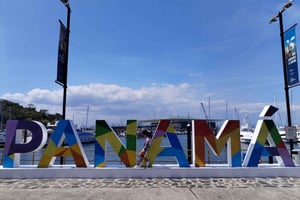BioMuseum: Museum of Biodiversity in Panama
Book Top Experiences and Tours in Panama:
If youʻre booking your trip to Panama last minute, we have you covered. Below are some of the top tours and experiences!- Panama City: 4-Day Island Hopping San Blas Adventure
- Panama City: Shared Half-Day City and Canal Tour
- Panama City/Portobelo: Catamaran Trip w/Snorkeling and Lunch
- Panama: Taboga Island Catamaran Cruise with Lunch & Open Bar
- Panama City: Isla Grande Beach and Portobelo Private Tour
Overlooking the Panama Bay to the east and the entrance of the Pacific Ocean to the Panama Canal to the west, the vibrant multicolored building was conceived by Gehry to host a series of permanent exhibitions designed in conjunction with Bruce Mau, surrounded by a Botanical Park whose master plan was developed by the landscape architect Edwina von Gal also in collaboration with the architect.
As a whole, the building, the exhibitions and the park offer a new civic and educational resource of great importance for the people of Panama and an inspiring cultural destination for visitors from all over the world, revealing the decisive role of the Isthmus of Panama in three million of years of change and biological evolution.
"The formation of the isthmus created a barrier between the Pacific and Atlantic oceans, causing the two regions to evolve ecologically in markedly different directions, "explains Dr. Anthony Coates, scientific advisor to the Biomuseo and founding member of the Geology Project of Panama, in charge of the Smithsonian Tropical Research Institute. Among the results were climate changes throughout the world (including West Africa, where rainforests became savannas, forcing many arboreal primates to live on the ground); a vast exchange of plants and animals back and forth between North and South America; and the formation of the access route that allowed the first human beings to migrate through the frozen Bering Strait and down to South America."
The Biomuseo, one of the few members of the Smithsonian outside the United States, has been created through collaboration between the Amador Foundation-a non-profit entity established by Panamanian citizens to raise awareness of the country's natural and cultural history and encourage the preservation of its extraordinary biodiversity - and the government of Panama, which donated the site for the project and adjacent properties that will generate income. The ceremonial inauguration of the Biomuseo, which will be attended by the president of Panama, Juan Carlos Varela, will take place on September 30, before the full public opening.
María del Pilar Arosemena de Alemán, president of the Amador Foundation, said: "Our organization was founded to be an agent of change for Panama, encouraging citizens to feel proud of the natural history of their country and contribute to its preservation. We also saw the opportunity for Panama to occupy its rightful place as a world center to research and conserve biodiversity. With the culmination of the Biomuseo, we made a giant step towards our goal. "
Victor Cucalón Imbert, director of the Biomuseo, commented: "we are deeply grateful to Frank Gehry and his collaborators in the design, for creating a museum that with so much beauty and eloquence expresses the mission of the Biomuseo. Thanks to this extraordinary project, we know that the museum can become a cultural and ecotourism destination, as well as a symbol of global concern for the environment and conservation, allowing us to send our message to the whole world. "
Frank Gehry said: "This has been a very personal project for me. I feel deep ties with Panama and the Panamanians, and I believe fervently that we should all try to conserve biodiversity, which is being threatened throughout the world. I am confident that the designs of our team at Gehry Partners, together with those of my friend and colleague Bruce Mau, will make a profound contribution to the success of the Biomuseo and its relevant mission ". Gehry has expressed his satisfaction with the progress of the Biomuseo, although he will not be able to attend the inauguration, due to conflicts in his agenda. However, he expressed his expectation to visit the facilities in the coming months.
The design of the Biomuseo
The heart of Frank Gehry's design for the Biomuseo is an outdoor public atrium, covered by a dynamic set of metallic canopies of various shapes and vivid colors: blue, red, yellow, green. In addition to helping make the Biomuseum an attractive destination for visitors (including the tens of thousands of public school students who will benefit from the museum's programs free of charge each year), the canopies refer to canal architecture of zinc roofs and Colorful buildings evoke the spectacular Neotropical habitat of Panama and offer protection from frequent rain-driven rains. Elevated one floor above ground level, the atrium offers sweeping views of the Canal and Panama City.
From the central atrium there is access to the permanent exhibition and temporary exhibitions, the only spaces for which an entry ticket is required. Access to the rest of the public spaces of the Biomuseo, as well as the Biodiversity Park, the Human Footprint gallery, its gift shop and coffee shop is completely free. The permanent exhibition, titled Panama: Bridge of Life, tells its story through what Bruce Mau baptized "artifacts of amazement" in eight galleries, five of which will be fully installed at the time of the inauguration:
Biodiversity Gallery: An introduction to the subject of biodiversity and the work of local scientists, with a large multicolored glass wall, 14 meters long and 8 meters high, will display images of the plants and animals of the country
Panamarama: A projection space of three heights and ten screens will immerse the visitor in an audiovisual presentation of the natural wonders of Panama.
The Surge Bridge: An installation that includes three rock formations 46 feet (14 meters) high, illustrates the emergence of the isthmus and its effect on climate and evolution
The Great Exchange: Two large sculptural groups of animals represent the megafauna that was part of the great exchange of species that took place between North and South America when they joined the isthmus of Panama after 70 million years of separation.
The Human Footprint: In a partially open outdoor space, 16 columns will tell the story of humans on the isthmus and their interactions with the nature of Panama from 15,000 years ago to the present day.
Divided Oceans: Two semi-cylindrical high-altitude aquariums will show how the Pacific and the Caribbean evolved drastically differently when separated by the creation of the isthmus.
The Living Network: A dramatic sculpture - at the same time plant, animal, insect and microorganism - will produce in the visitor the effect of being in a dimension where all creatures have the same importance.
Panama is the Museum: This gallery, which serves as an interface between the interior spaces of the Biomuseo and the Biodiversity Park, will help visitors to program their true journey through the biodiversity of Panama.
When leaving the final gallery of Panama: Bridge of Life, visitors discover that the narrative of the exhibition expands in the landscape of the Biodiversity Park. Here and there, around the whole park, little by little the educational stations that will illustrate the interaction of real life between the species of local plants and animals are growing. In accordance with the civic mission of the Biomuseo, the Biodiversity Park is designed as a public access space for local residents.



